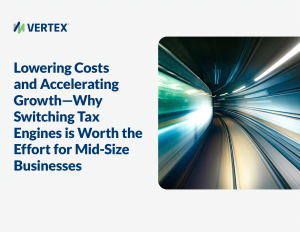Top Fintech Innovations Transforming Payments in 2025

The financial technology (fintech) industry is rapidly evolving, continuously introducing innovations that reshape the way we conduct transactions. As we approach 2025, several fintech innovations are set to revolutionize the payments landscape, enhancing efficiency, security, and user experience. This blog explores the top fintech innovations expected to transform payments in 2025 and their implications for businesses and consumers alike.
1. Blockchain Technology
Blockchain technology is poised to have a profound impact on the payments ecosystem. By providing a decentralized and immutable ledger, blockchain enhances transparency, security, and efficiency in transactions. Key innovations include:
- Cryptocurrency Payments: As cryptocurrencies gain wider acceptance, businesses will increasingly integrate crypto payment options into their platforms. This will allow for instant cross-border transactions with lower fees compared to traditional banking methods.
- Smart Contracts: Blockchain-enabled smart contracts can automate payment processes, ensuring that funds are released only when predetermined conditions are met. This reduces the need for intermediaries and minimizes transaction times.
2. Artificial Intelligence (AI) and Machine Learning
AI and machine learning are transforming the payments industry by enabling smarter decision-making and personalized customer experiences. Innovations in this area include:
- Fraud Detection: AI-driven algorithms can analyze transaction patterns in real-time to identify and flag suspicious activities, reducing fraud risk and improving security for consumers and businesses alike.
- Personalized Recommendations: By analyzing user behavior, AI can provide personalized payment options and offers, enhancing the customer experience and increasing conversion rates for merchants.
3. Contactless Payments and Wearable Technology
The demand for seamless and convenient payment methods is driving the adoption of contactless payments and wearable technology. Innovations include:
- NFC Payments: Near-field communication (NFC) technology allows consumers to make payments by simply tapping their smartphones or smartwatches on payment terminals. This convenience will continue to drive the growth of contactless payments in various retail environments.
- Wearable Devices: As smartwatches and fitness trackers gain popularity, we can expect to see more integration of payment capabilities into these devices, allowing users to make purchases on the go without needing to carry a wallet.
4. Open Banking
Open banking is transforming the financial services landscape by allowing third-party developers to access banking data through APIs (Application Programming Interfaces). This shift is fostering innovation and competition in the payments space. Key benefits include:
- Enhanced Payment Solutions: Fintech companies can create innovative payment solutions that integrate seamlessly with existing banking services, allowing consumers to initiate payments directly from their bank accounts without using traditional payment processors.
- Greater Financial Control: Open banking empowers consumers to manage their finances more effectively by providing a holistic view of their accounts and facilitating better budgeting and spending decisions.
5. Biometric Authentication
Security remains a top priority in payments, and biometric authentication is set to play a significant role in enhancing transaction security. Innovations include:
- Facial Recognition: Payment systems that leverage facial recognition technology can streamline the checkout process while ensuring secure user authentication.
- Fingerprint Scanning: Biometric fingerprint scanners are becoming commonplace in mobile devices, allowing users to authorize transactions quickly and securely with just a touch.
6. Decentralized Finance (DeFi)
Decentralized finance (DeFi) is a rapidly growing sector within fintech, offering financial services without traditional intermediaries. Innovations in DeFi that impact payments include:
- Peer-to-Peer (P2P) Transactions: DeFi platforms enable direct transactions between users, eliminating the need for banks or payment processors. This reduces fees and enhances transaction speed.
- Tokenization of Assets: DeFi allows for the tokenization of various assets, enabling users to make payments using digital tokens representing real-world assets, thereby increasing liquidity and access to diverse payment options.
7. Instant Payments and Real-Time Settlement
The demand for faster payment processing is driving the development of instant payment systems. Innovations include:
- Real-Time Payment Networks: Payment systems that enable instant fund transfers between banks and financial institutions are becoming more prevalent, allowing consumers to send and receive money instantly, 24/7.
- Instant Settlement: Innovations in payment settlement technology will ensure that transactions are settled in real-time, improving cash flow management for businesses and enhancing the overall payment experience for consumers.
Conclusion
As we look ahead to 2025, the fintech landscape is set to be transformed by a wave of innovations that enhance the payments experience for businesses and consumers alike. From blockchain technology and AI to biometric authentication and instant payments, these advancements will create a more efficient, secure, and user-friendly payments ecosystem.
For businesses, staying ahead of these trends will be crucial to maintaining a competitive edge in the market. By embracing these fintech innovations, organizations can streamline their payment processes, enhance customer experiences, and drive growth in an increasingly digital economy. As the payment landscape continues to evolve, the role of fintech experts will become increasingly vital in navigating this dynamic environment and harnessing the power of technology to revolutionize financial transactions.







